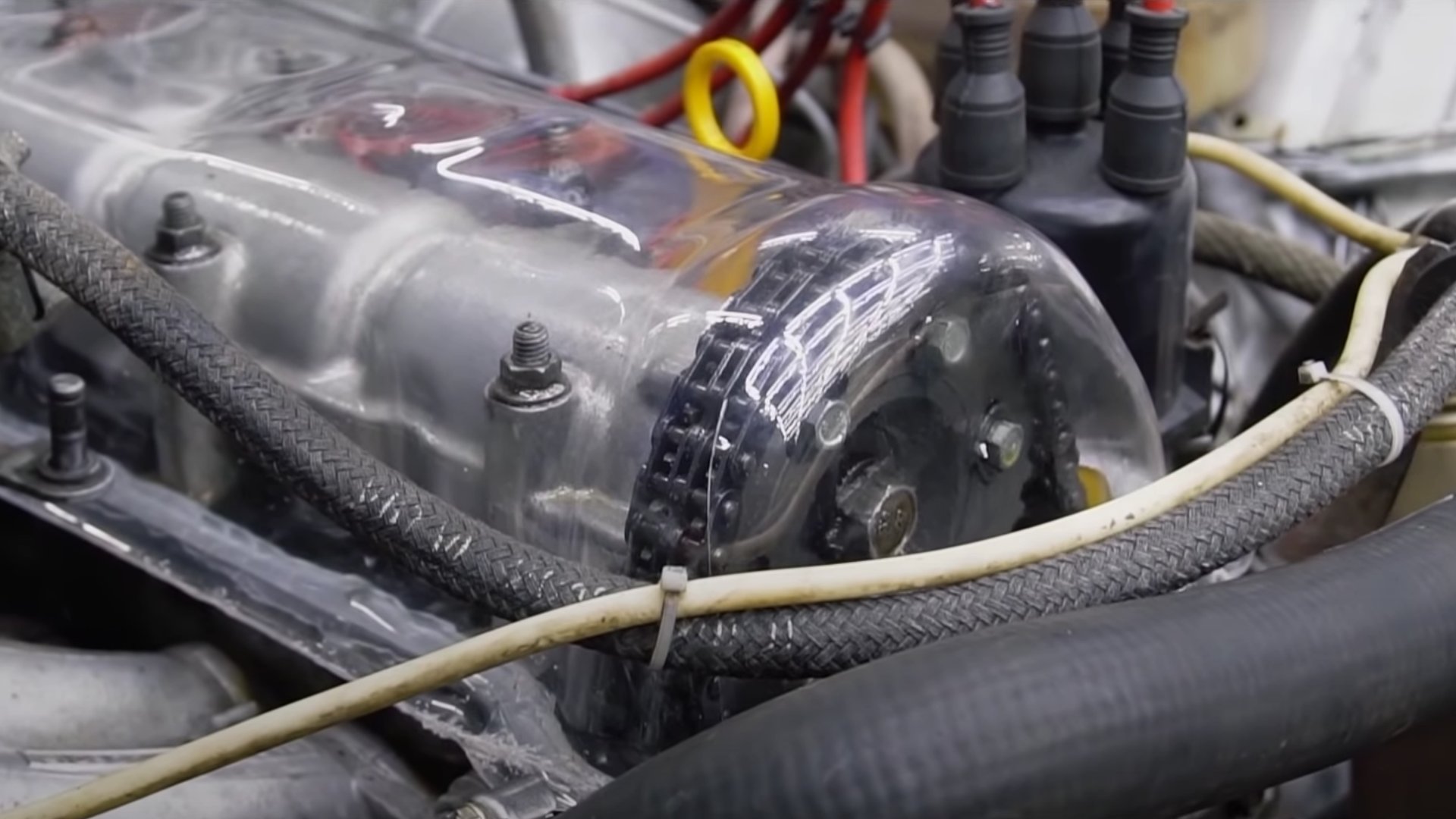

Ever find yourself sitting at a red light when you feel a minor dip in RPM or a suspected misfire, and you think: “This is it. I am ready for my engine to explode.” The many stages of grief pass through you within milliseconds of feeling the subtle vibration. You’re ready for the inevitable. It’s been nice knowing ya.
If you haven’t felt that, I can assure you that at that moment you’d sure as heck like to be able to see inside your engine. Unfortunately, approximately zero manufacturers offer a transparent oil pan or valve cover as an option. That was clearly unacceptable to our friends at Garage54.

With help from a large plastic vacuum-forming machine, the guys create a transparent valve cover for the Lada engine they’re using, and an oil pan as well. Having warmed up pizza in a vacuum forming machine before, I can personally assure you the trials and tribulations they go through trying to get the parts just right are very frustrating. They test out a few different materials and material thicknesses in an attempt to get a tight fit of the hot plastic around the brand new valve cover and oil pan they purchased. After messing around with the thickness, temperature, and level of suction for a little while, they finally get the parts they’re looking for.
With that, they join the plastic oil pan with the metal flange from the original pan for a tight fit using the original fasteners. Then, they fix the valve cover to the head using… window sealer from the hardware store. Oil is added, the engine is started, and well, you can see what happens.

Initially, the pickup sucks oil to the rest of the engine just fine, but then the oil level starts to get dangerously low, and oily foam begins to appear. That’s generally a sign that not nearly enough oil is getting to where it needs to go, so the guys stop and add some more oil through the dipstick tube, seeing as they glued the valve cover directly to the head and presumably don’t want to go through that again.
After more oil is added, however, everything goes just fine, at least for a little while. This Lada engine in particular has an internal cover over the rockers—likely for oil control—so the view of oil spewing everywhere is a little obscured. That’s at least until the valve cover vibrates itself loose and oil starts dripping all over the engine. Then you can see oil flow just fine.
If you want a slightly better visual of how oil flows through say, a pushrod inline-six, GM made a great video on this topic back in the 1930s that has yet to be eclipsed in its educational value and production quality. It’s called “Riding The Film.”

In any case, though, a transparent oil pan and valve cover are almost as good as a transparent head in entertainment value. It’s cool to see all of the things you never think about going on within an engine. We take lubrication for granted—you can now begin reading in the voice of the narrator from “Riding The Film”—but without it, where would we be?
It’s interesting if not thrilling to finally be able to see oil sloshing around inside an engine under pressure. A miracle of modern engineering that makes the world go round.
Got a tip or question for the author? You can reach them here: peter@thedrive.com